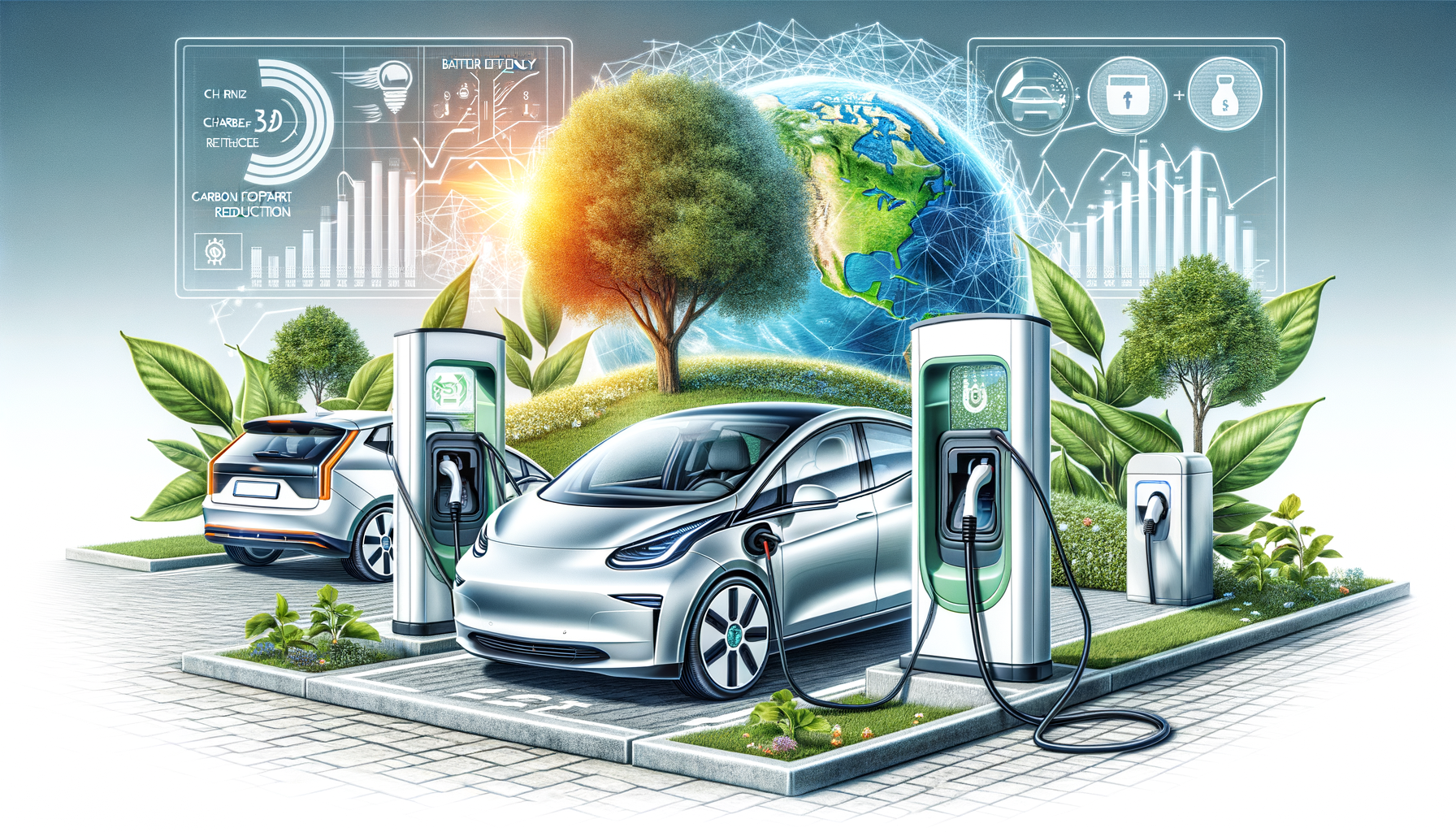publicidad
El avance de la tecnología en los últimos años ha propiciado el auge de los vehículos autónomos, una innovación revolucionaria que está llamada a transformar nuestra forma de desplazarnos y de vivir. Con funciones como la conducción autónoma y sensores avanzados, los vehículos autónomos están transformando el sector del transporte y permiten vislumbrar un futuro en el que los coches podrán circular por las carreteras con una intervención humana mínima. En este artículo analizaremos la evolución de los vehículos autónomos, sus ventajas, su impacto en el tráfico y los atascos, sus características de seguridad, sus beneficios para el medio ambiente, los cambios en la planificación urbana, las oportunidades de empleo, la accesibilidad, el coste y la asequibilidad, la adopción por parte de los consumidores, los retos y el futuro de los vehículos autónomos.
Evolución de los vehículos autónomos
Los vehículos autónomos han recorrido un largo camino desde que se introdujo el concepto por primera vez. Desde los primeros experimentos en la década de 1920 hasta el desarrollo de sistemas avanzados de conducción autónoma en los últimos años, la tecnología de los vehículos autónomos ha evolucionado significativamente. Empresas como Tesla, Waymo de Google, y Uber han estado a la vanguardia de esta revolución, invirtiendo fuertemente en investigación y desarrollo para llevar los vehículos autónomos a la corriente principal. Cada año que pasa, los vehículos autónomos son más sofisticados y fiables, lo que allana el camino hacia un futuro en el que conducir podría convertirse en algo del pasado.
publicidad
Ventajas de los desplazamientos autónomos
Una de las principales ventajas de los vehículos autónomos es su potencial para revolucionar los desplazamientos al trabajo. Gracias a su capacidad de conducción autónoma, los AV pueden ofrecer un modo de transporte más eficiente y cómodo, reduciendo el tiempo de viaje y eliminando la necesidad de la conducción manual. Los viajeros pueden utilizar su tiempo de forma más productiva durante el trayecto, ya sea para ponerse al día con el trabajo, leer un libro o simplemente relajarse. De este modo, los desplazamientos resultan más agradables y menos estresantes y, en última instancia, mejoran su calidad de vida en general.
Impacto en el tráfico y la congestión
Los vehículos autónomos tienen el potencial de reducir significativamente la congestión del tráfico y mejorar la fluidez del tráfico en las carreteras. Con sensores y sistemas de comunicación avanzados, los vehículos autónomos pueden anticiparse a las pautas del tráfico, ajustar su velocidad y coordinarse con otros vehículos para optimizar la fluidez del tráfico. Esto puede reducir la duración de los trayectos, los accidentes y las emisiones. Además, pueden ayudar a liberar plazas de aparcamiento en las zonas urbanas dejando a los pasajeros y buscándolas de forma autónoma, lo que reduce la necesidad de grandes aparcamientos.
Elementos de seguridad de los vehículos autónomos
La seguridad es una de las principales prioridades de los fabricantes de vehículos autónomos, que están equipados con funciones de seguridad avanzadas para minimizar el riesgo de accidentes. Con sensores, cámaras y algoritmos de inteligencia artificial, los vehículos autónomos pueden detectar obstáculos, peatones y otros vehículos en la carretera y tomar decisiones en fracciones de segundo para evitar colisiones. De hecho, los estudios han demostrado que los vehículos autónomos tienen el potencial de reducir significativamente el número de accidentes de tráfico causados por errores humanos, salvando vidas y evitando lesiones en la carretera.
Vehículos autónomos y medio ambiente
Otro beneficio clave de los vehículos autónomos es su impacto positivo en el medio ambiente. Los AV están diseñados para ser más eficientes energéticamente y ecológicos que los vehículos tradicionales, reduciendo el consumo de combustible y las emisiones. Al optimizar las rutas, reducir el tiempo de ralentí y promover los viajes compartidos, los vehículos autónomos pueden ayudar a reducir las emisiones de carbono y mejorar la calidad del aire en las zonas urbanas. Esto puede conducir a un sistema de transporte más sostenible y a un medio ambiente más sano para las generaciones futuras.
Cambios en la planificación urbana con los vehículos eléctricos
Se espera que el auge de los vehículos autónomos provoque cambios significativos en la planificación y las infraestructuras urbanas. Con la posibilidad de reducir las plazas de aparcamiento, mejorar la fluidez del tráfico y aumentar la accesibilidad, es posible que las ciudades tengan que replantearse sus sistemas y políticas de transporte. Es posible que los planificadores urbanos deban tener en cuenta factores como las infraestructuras adaptadas a los vehículos autónomos, los desarrollos de uso mixto y las calles peatonales para adaptarse a la creciente popularidad de los vehículos autónomos y promover una vida urbana sostenible.
Desplazamiento laboral frente a nuevas oportunidades
Aunque la adopción de vehículos autónomos puede provocar el desplazamiento de puestos de trabajo en determinados sectores, también presenta nuevas oportunidades de innovación y empleo. Es probable que industrias como la fabricación, el desarrollo de software y el mantenimiento experimenten un crecimiento con el auge de la tecnología audiovisual. Además, pueden surgir nuevas funciones en áreas como el análisis de datos, la ciberseguridad y el servicio al cliente para apoyar el funcionamiento y el mantenimiento de los vehículos autónomos. En general, la transición a los vehículos autónomos puede crear un cambio en el mercado laboral, pero también tiene el potencial de crear nuevas oportunidades de empleo e impulsar el crecimiento económico.
Vehículos autónomos y accesibilidad
Los vehículos autónomos pueden mejorar la accesibilidad de las personas con problemas de movilidad, como los ancianos o los discapacitados. Con características como rampas para sillas de ruedas, comandos de voz y capacidades de conducción autónoma, los vehículos autónomos pueden ofrecer una opción de transporte más inclusiva y conveniente para aquellos que pueden tener dificultades para utilizar los medios de transporte tradicionales. Esto puede aumentar la independencia y la libertad de movilidad de las personas que antes se enfrentaban a obstáculos en el transporte.
Coste y asequibilidad de los vehículos eléctricos
El coste y la asequibilidad de los vehículos autónomos son factores clave que influirán en la adopción por parte de los consumidores y en la generalización de la tecnología AV. Aunque los costes iniciales pueden ser elevados debido a la avanzada tecnología y a la infraestructura necesaria para los vehículos autónomos, los expertos predicen que los precios disminuirán a medida que la tecnología se generalice. Además, factores como la reducción de las primas de seguros, los costes de mantenimiento y los gastos de combustible pueden hacer que los vehículos audiovisuales sean una opción más rentable a largo plazo. A medida que avanza la tecnología audiovisual, los fabricantes se esfuerzan por hacer que los vehículos autónomos sean más accesibles y asequibles para el público en general.
Adopción de los vehículos autónomos por los consumidores
La adopción de los vehículos autónomos por parte de los consumidores es un factor crítico que determinará el éxito y la adopción generalizada de la tecnología AV. Aunque algunas personas dudan en confiar en los coches autónomos, los estudios han demostrado que el interés de los consumidores por los vehículos autónomos crece a medida que aumenta el conocimiento y la familiaridad con esta tecnología. Factores como la seguridad, la comodidad y los beneficios para el medio ambiente son factores clave para la adopción de los vehículos eléctricos por parte de los consumidores. A medida que la tecnología AV siga avanzando y ganando aceptación, se espera que aumente la adopción por parte de los consumidores, lo que conducirá a un futuro en el que los vehículos autónomos sean un medio de transporte habitual en las carreteras.
En conclusión, el auge de los vehículos autónomos está llamado a transformar los desplazamientos y los estilos de vida de una forma sin precedentes. Con el potencial de revolucionar el transporte, reducir la congestión del tráfico, mejorar la seguridad y promover la sostenibilidad, los vehículos autónomos permiten vislumbrar un futuro en el que los coches podrán circular por las carreteras de forma autónoma. Aunque sigue habiendo retos, como los obstáculos normativos, los problemas de ciberseguridad y la aceptación social, el futuro de los vehículos autónomos es prometedor. A medida que la tecnología de los vehículos autónomos siga evolucionando y madurando, podemos esperar ver un cambio hacia un sistema de transporte más conectado, eficiente y sostenible impulsado por coches que se conducen solos. El futuro de los vehículos autónomos es prometedor y puede cambiar nuestra forma de vivir, trabajar y viajar.


